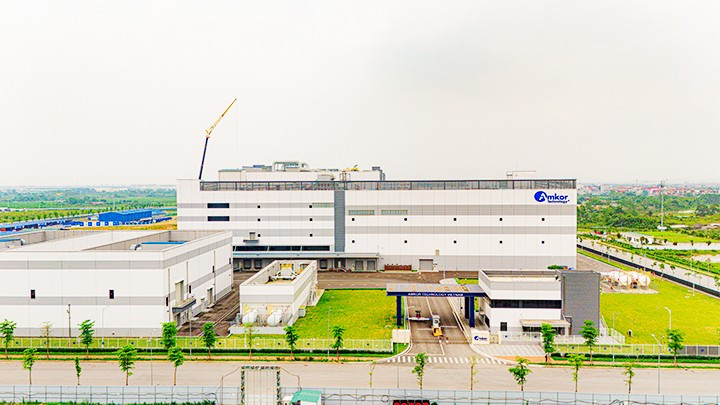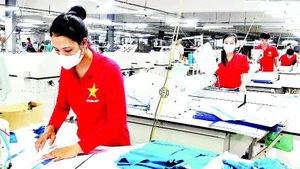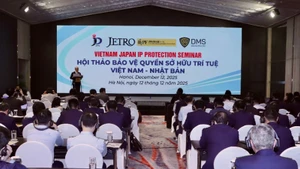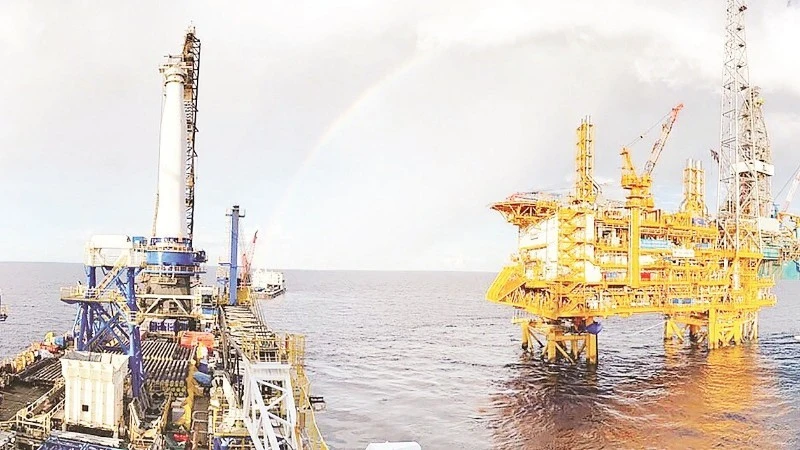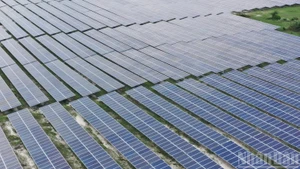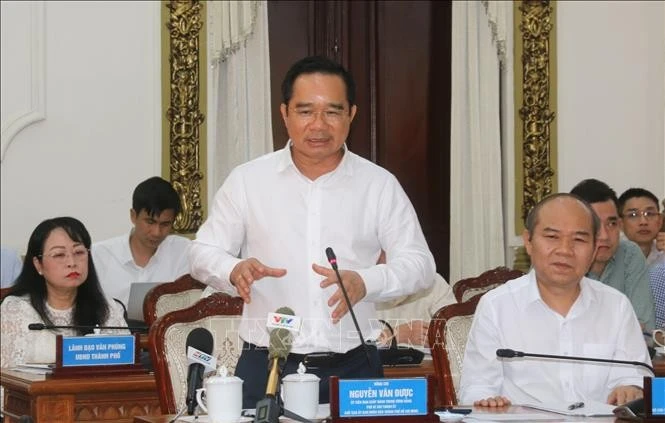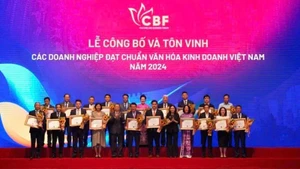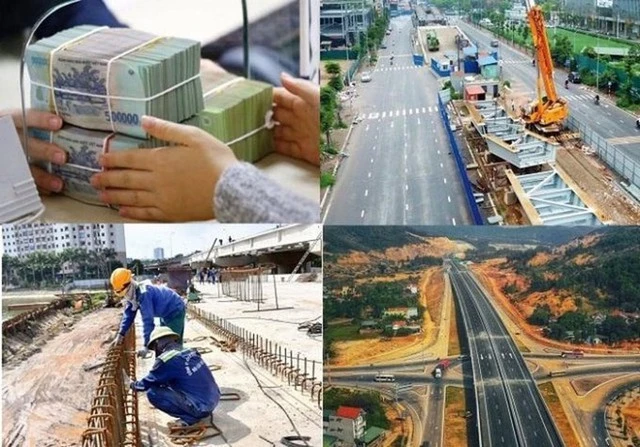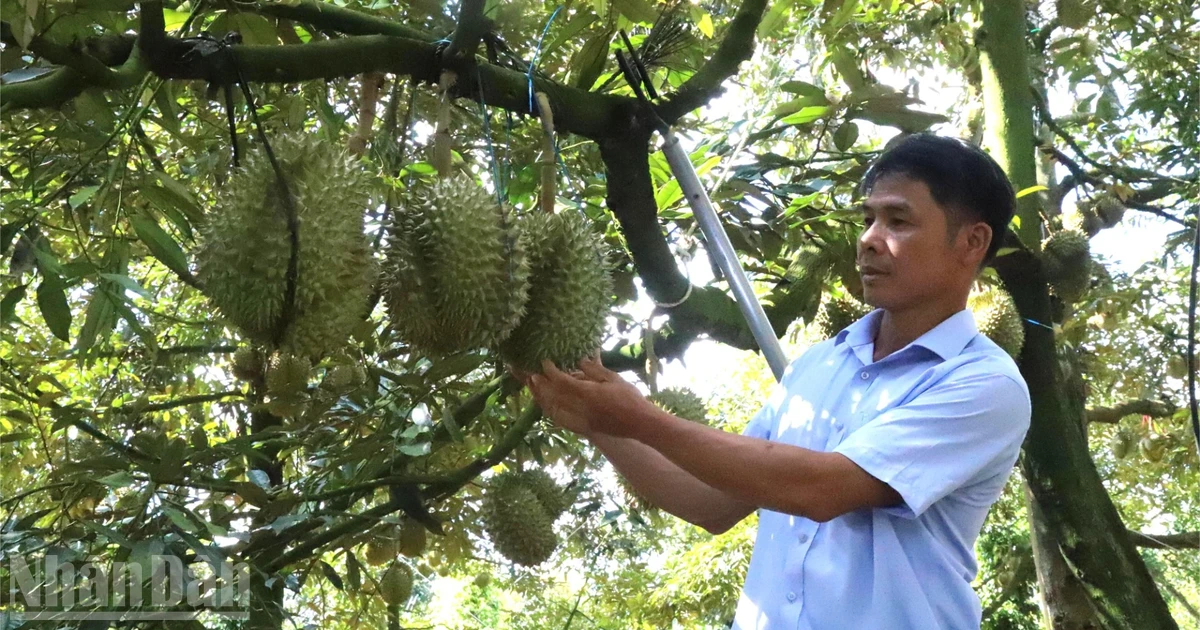Amid a slowdown in global investment flows, Vietnam remains a bright spot in attracting FDI. As of the end of 2024, the total registered FDI — including new registrations, adjustments, capital contributions, share purchases, and equity acquisitions — reached nearly 38.23 billion USD, down 3% from 2023.
A series of large corporations enter Vietnam
In 2024, numerous major corporations invested in Vietnam, including Amkor Technology with 1.07 billion USD, LG Group with 1 billion USD, Hyosung Group with investment of 700 million USD in the Bio-BDO (Butanediol) biopolymer plant project, Capital Land with 661 million USD, and Foxconn with 551 million USD in a project for smart entertainment products and intelligent system devices.
In addition, dozens of foreign business delegations have visited Vietnam and expressed their intention to invest. A highlight was Nvidia's chairman returning to Vietnam in December, when he officially signed a cooperation agreement to establish an AI research and development (R&D) centre and an AI data centre. Beyond Nvidia, many other major electronics and semiconductor companies also plan to expand their investments in Vietnam. Notably, SpaceX is planning a 1.5 billion USD investment; and 15 American companies, including semiconductor firms, have committed to 8 billion USD in investments for clean energy infrastructure in Vietnam.
Notably, businesses from the Republic of Korea (RoK), Vietnam’s long-standing partners, have also announced a series of expansion plans this year. They include Hyosung with an investment of 3.5 billion USD in Vietnam and plans to invest an additional 2 billion USD; and Samsung with the aim to invest an additional 1 billion USD annually in Vietnam. Samsung Display has also signed a memorandum of understanding (MoU) to develop a 1.8 billion USD display and electronic components project in Bac Ninh Province.
Amid the global shift to diversify supply chains and reduce reliance on semiconductor chips from China and Taiwan (China), many EU semiconductor companies are seeking alternative partners in Asia, with Vietnam and India emerging as strong candidates. Additionally, Alibaba plans to establish a data centre in Vietnam; Sembcorp Group executives have committed to continue making strong investments in VSIP (Vietnam-Singapore Industrial Park); and Google has officially confirmed the establishment of Google Vietnam.
With these positive signals, the Foreign Investment Agency (FIA) under the Ministry of Planning and Investment stated that despite a slight 3% decline in total registered capital, the significant increase in adjusted capital (50.4%) and the number of new projects (1.8%) in 2024 reflect the strong confidence of foreign investors. Notably, large-scale projects in semiconductors, energy (battery production, photovoltaic cells, silicon wafers), electronic component manufacturing, and high-value-added products have been newly launched or expanded, contributing to economic restructuring and transformation.
In addition, the foreign-invested sector continues to play a crucial role in Vietnam’s trade activities. Exports (including crude oil) reached nearly 290.8 billion USD, up 12.2% from 2023, accounting for 71.8% of the country's total export value. Exports (excluding crude oil) surpassed 289 billion USD, up 12.4%, representing 71.4% of total exports. Meanwhile, imports totalled nearly 241.6 billion USD, an increase of 15.5%, making up 63.4% of total import value. As a result, Vietnam achieved a trade surplus of 49.2 billion USD (including crude oil) or 47.5 billion USD (excluding crude oil). This surplus helped offset the 25.4 billion USD trade deficit from the domestic enterprise sector, bringing Vietnam’s total trade surplus to 23.8 billion USD.
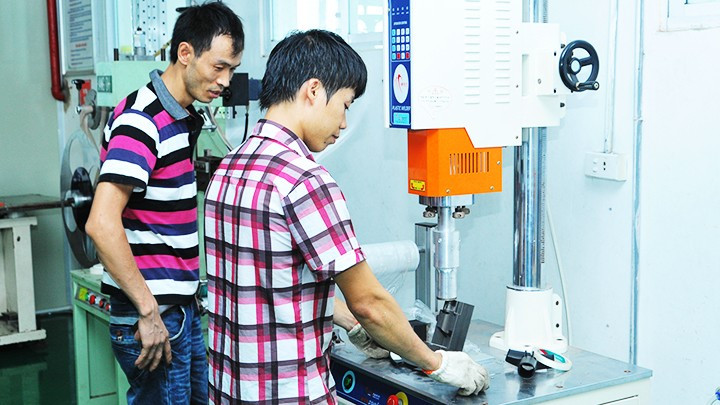 |
| Vietnam is focusing on workforce training to meet the demands of FDI enterprises. (Photo: HAI ANH) |
Successful model
With record-high disbursement, Vietnam has been being recognised as a successful model for attracting FDI, thanks to its improvement in institutional framework, increasingly favourable investment environment, stable political foundation, and strong economic growth potential. Notably, despite external challenges, Vietnam has demonstrated resilience and attractiveness as both an investment destination and a strategic trade partner.
Specifically, in its assessment of Vietnam’s macroeconomic outlook, HSBC forecasts that FDI inflow into the manufacturing sector will continue to grow in 2025. Notably, the recent visit of Party General Secretary To Lam to the US has sparked investment interest from several major corporations, including Meta and Shunsin. Shunsin, a Foxconn subsidiary, is reportedly applying for an 80 million USD investment license to establish an integrated circuit (IC) manufacturing facility in Bac Giang Province, highlighting Vietnam’s improving production capabilities.
According to Assoc. Prof. Dr Dinh Trong Thinh, an economic expert, the return of Donald Trump as US President on January 20, 2025, could de-escalate ongoing conflicts and bring more global stability. However, his tariff policies, which propose up to 60% tariffs on Chinese goods and 20% on imports from other countries to support domestic US businesses, may drive Chinese companies to accelerate investments in Vietnam. These firms are expected to set up factories in Vietnam to manufacture goods for export to the US, leading to a significant increase in Vietnam’s FDI inflow in 2025.
Particularly, as regional and global competition intensifies in the semiconductor and artificial intelligence (AI) industries, Vietnam has officially issued Decree No.182, which outlines regulations for the establishment, management, and use of an investment support fund. Under this decree, businesses with R&D projects in these two sectors will receive up to 50% support for initial investment costs. Experts believe that Decree No.182 marks a significant milestone in Vietnam’s high-tech investment attraction policies. As major corporations like Nvidia begin their investment in the country, it is likely that other global tech giants will follow suit. If implemented effectively, this policy will not only ensure sustainable economic growth but also serve as a launchpad for Vietnam to become a high-tech manufacturing hub of the region.
From a positive perspective, Vu Tuan Anh, Chairman of the World Federation of Young Leaders in Vietnam (2022), predicts that FDI disbursement in Vietnam could reach a record high of over 30 billion USD in 2025. This growth is driven by the supply chain shifts of major corporations such as Samsung, LG, and Intel, along with Vietnam’s strong commitment to high-tech industries, including semiconductors, artificial intelligence, digital transformation, logistics, and pharmaceuticals. These advancements are facilitated by an attractive business environment, investment incentives, and streamlined investment procedures.
In 2024, 114 countries and territories made investments in Vietnam. Singapore led the way with a total investment of nearly 10.21 billion USD, accounting for 26.7% of the total FDI and marking a 31.4% increase compared to 2023. The RoK ranked second with nearly 7.06 billion USD, making up 18.5% of total FDI, an increase of 37.5%. Following closely were China, Hong Kong (China), and Japan. Regarding investment locations, Bac Ninh topped the list with nearly 5.12 billion USD, more than 2.8 times higher than in 2023. Hai Phong and Ho Chi Minh City ranked second and third, with over 4.94 billion USD and 3.04 billion USD, respectively.
